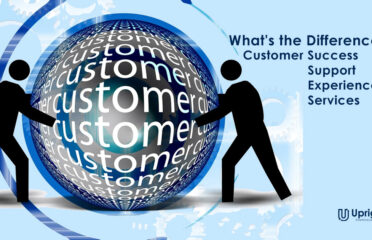What is SDLC?
The Software Development Lifecycle (SDLC) is a systematic process for creating, designing, testing, and maintaining software applications.
This process includes a series of phases that ensure the software is developed in a controlled and efficient manner, meeting the requirements of the end-user and ensuring it is fit for purpose.
Origins of software development lifecycle
The software development lifecycle (SDLC) is a systematic approach to software development that originated in the 1960s and 1970s as a way to standardize the development of large and complex software systems.
The first known model of the SDLC was the “Waterfall Model,” which was introduced by Winston W. Royce in 1970. Since then, numerous other models of the SDLC have been developed, including the Agile method, which has become one of the most widely used approaches to software development in recent years.
What is the software development lifecycle (SDLC)?
The Software Development Life Cycle (SDLC) is a systematic approach to software development, which includes all the stages involved in creating a software product, from planning and analysis to design, implementation, testing, deployment, and maintenance.
The purpose of the SDLC is to provide a structured, efficient and repeatable process for software development, to ensure that all necessary steps are taken to create a high-quality, effective software product.
The SDLC typically includes the following stages:
7 Phases of SDLC and How does it work?
The SDLC is an iterative process, which means that each stage may need to be revisited and modified as needed. The specific steps involved in the SDLC may vary depending on the methodology and approach used by the organization, but the basic stages are typically the same.
By following a structured SDLC process, organizations can ensure that all necessary steps are taken to create a high-quality, effective software product that meets the needs of stakeholders and delivers value to the business.
Planning
The planning phase is the first stage of the SDLC. During this phase, the project team will gather information about the user requirements, and develop a project plan. This plan will include details of the project objectives, timelines, resources required, and the overall scope of the project. The planning phase is critical to the success of the project, as it sets the foundation for the rest of the SDLC.
2. Analysis
During the analysis phase, the project team will work to understand the user requirements and design a system that will meet those requirements. This phase includes activities such as requirements gathering, data flow modeling, and process modeling. The goal of this phase is to ensure that the system will meet the needs of the end-user, and that the design is feasible and efficient.
3. Design
The design phase is where the team will take the information gathered during the analysis phase and use it to create a detailed plan for the system. This plan will include detailed specifications for the system architecture, user interfaces, and other technical aspects of the software. The design phase is critical to the success of the project, as it sets the foundation for the rest of the SDLC.
4. Implementation
The implementation phase is where the team will begin to build the software. This phase includes activities such as coding, testing, and debugging. The goal of this phase is to ensure that the software is developed in accordance with the design specifications and that it is of high quality.
5. Testing
The testing phase is where the software is tested to ensure that it meets the requirements and is fit for purpose. This phase includes activities such as unit testing, integration testing, and acceptance testing. The goal of this phase is to identify and fix any bugs or defects in the software before it is released to the end user.
6. Deployment
The deployment phase is the final stage of the SDLC. During this phase, the software is installed and configured on the target environment, and the end-user is trained to use it. This phase also includes activities such as data migration and system integration. The goal of this phase is to ensure that the software is deployed successfully and that the end-user is able to use it effectively.
7. Maintenance
After the software has been deployed, it will require ongoing maintenance to ensure that it continues to function correctly. This phase includes activities such as bug fixing, updates, and upgrades. The goal of this phase is to ensure that the software remains fit for purpose and that it continues to meet the needs of the end-user.
What importance of SDLC?
Here are some key points about the importance of the Software Development Life Cycle (SDLC):
- Improved planning and management: SDLC provides a systematic approach to software development, helping organizations plan, prioritize and manage their resources effectively.
- Reduced risks: By following a standard SDLC process, organizations can identify and mitigate potential risks early on, reducing the likelihood of project failures and costly mistakes.
- Improved quality: SDLC includes thorough testing and quality assurance steps, helping to ensure that the final product meets the required standards and specifications.
- Increased efficiency and productivity: The structured approach provided by SDLC helps to streamline the development process and avoid duplicated efforts, increasing efficiency and productivity.
- Better communication and collaboration: By providing a common understanding of the development process, SDLC helps to improve communication and collaboration among team members and stakeholders.
- Consistent and repeatable outcomes: By following a standard SDLC process, organizations can achieve consistent and repeatable outcomes, improving the reliability and success of their software development projects.
What are the Drawbacks of the Software Development Lifecycle?
The software development lifecycle (SDLC) is not without its drawbacks. Some of the common criticisms of the SDLC include:
- Inflexibility: Some models of the SDLC, such as the Waterfall model, can be rigid and do not allow for changes to be made easily once development has started.
- Time-consuming: The SDLC can be time-consuming, especially when following a traditional, phased approach, and may not be suitable for projects with tight deadlines.
- Costly: Adherence to the SDLC can result in increased costs, as the process often requires extensive planning, documentation, and testing.
- Resistance to change: Some stakeholders may resist change and be resistant to adopting new approaches to software development, such as Agile.
- Over-reliance on documentation: Some models of the SDLC place too much emphasis on documentation, leading to delays and increased costs.
- Lack of focus on end-users: The SDLC can sometimes become overly focused on technical aspects of development, resulting in a product that does not meet the needs and expectations of end-users.
- Inflexible resource allocation: The SDLC may not allow for efficient resource allocation, as tasks may be assigned to team members regardless of their skill set or availability.
SDLC Models or Methodologies?
One of the key components of the SDLC is the use of a model that provides a framework for the development process. There are several different models that are used in the SDLC, each with its own unique set of advantages and disadvantages.
A. Waterfall Model
The Waterfall model is a linear, sequential model in which each phase of the development process must be completed before the next phase can begin. The phases include Requirements, Design, Implementation, Verification and Maintenance. This model is best suited for projects that have well-defined requirements and a clear understanding of the end product. It is simple to understand and easy to implement, but it does not allow for changes to be made once the development process has started.
B. Agile Model
The Agile model is an iterative and incremental model that emphasizes flexibility and rapid delivery. This model is best suited for projects that have changing requirements or a high degree of uncertainty. Agile methods are based on an incremental and iterative approach and often use Scrum, Kanban, and Extreme Programming (XP) methodologies. Agile provides a flexible approach to software development, but it requires a high degree of collaboration between the project team and the end user.
C. V-Model
The V-Model is a linear, sequential model that emphasizes testing and validation at every stage of the development process. This model is best suited for projects that have strict quality and regulatory requirements. The V-Model is based on the Waterfall model, but it includes additional testing and validation stages. This model is great for projects that need to conform to specific regulations or standards, but it can be time-consuming and costly.
D. Spiral Model
The Spiral model is a risk-driven model that combines elements of the Waterfall and Agile models. This model is best suited for projects that have high-risk or complex requirements. The Spiral model is based on a series of iterations, with each iteration including a design, build and test phase. This model is great for projects that need to manage risks effectively, but it can be difficult to estimate the time and resources required.
E. Scrum Model
The Scrum model is an Agile framework that is used to manage and complete complex projects. This model is best suited for projects that have a high degree of uncertainty or require close collaboration between the project team and the end-user.
The Scrum model is based on a series of short development cycles, called sprints, that are focused on delivering a specific set of features. This model is great for projects that need to adapt to changing requirements, but it can be difficult to estimate the time and resources required.
F. Kanban Model
The Kanban model is a pull-based method that emphasizes the flow of work and visualizing the progress. This model is best suited for projects with a high degree of stability or repetitive work. It’s based on Lean principles and the idea is to visualize the flow of work, limit the work in progress and increase efficiency. This model is great for projects that need to manage the flow of work and it’s easy to implement but it can be difficult to measure the progress.
Each of these models has its own set of advantages and disadvantages, and the choice of model will depend on the specific requirements of the project and the needs of the end user. It is important to choose the right model for the project, as this will have a significant impact on the success of the software development process.
11 Best Project Management Software for 2023
 SDLC Best practices
SDLC Best practices
the Software Development Lifecycle (SDLC) is a critical process for creating and maintaining software applications. By following a systematic process, the project team can ensure that the software is developed in a controlled and efficient manner, meeting the requirements of the end-user and ensuring it is fit for purpose.
The benefits of using the SDLC include improved quality, better communication, increased efficiency, better risk management, and improved maintenance.
Insights
Check out our latest market research insights and industry trending updates captured in our blogs.
Subscribe To Our Newsletter
Join Uprighte subscribers list to get the latest news, updates and industry research reports delivered directly in your inbox.
Your email is safe with us, we don’t spam



